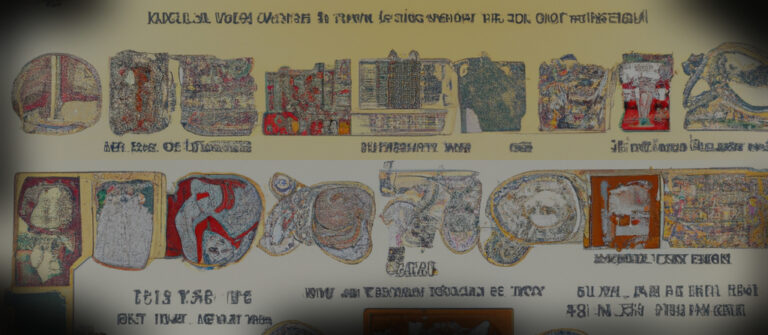The relationship between the mind and body has long been a subject of philosophical and religious inquiry, sparking diverse perspectives and interpretations. This article explores the concepts of dualism and nondualism within various religious and philosophical traditions, delving into the contrasting ideas they present. Generally speaking, dualism posits that the mind and body are distinct entities, while nondualism asserts that reality is a single, indivisible, and all-encompassing entity, with apparent divisions and distinctions being illusory. By examining how different traditions approach the mind-body relationship, this article offers insights into the myriad ways humans have grappled with the nature of existence and the intricate interplay between the mind and body.
First, My Viewpoint
Everyone has a viewpoint. Me too. Dualism posits that the mind and body are distinct entities. The idea that the universe is a single system worthy of holistic analysis is a separate concept. In other words, I believe the universe is a single unified system, and within that system, either the mind and body are separate (dualism) or not (nondualism). Dualism and nondualism can be effective tools for holding discussions. I welcome discussions on both, although I do lean toward a dualistic view and think the view that the body is just a machine running a program could very well be true. If so, uploading your mind will be possible in the future.
First, let’s discuss dualism before delving into nondualism, and I’ll follow up with a section on Plato. And, since I’m going to talk about Plato, I have to talk about his student Aristotle too. And, I do.
Dualism and Its Many Facets
This section delves into the realm of dualism, exploring various belief systems that contain parallels and distinctions in their perspectives. In the following exploration, we will uncover how these diverse ideologies relate to one another and connect to the overarching theme of nondualism.
Monism
We begin with Spinoza’s Monism, a view that resonates deeply with my perspective. Monism proclaims the existence of a singular, infinite substance called nature that encompasses everything–you can use the word God if you prefer. The mind and body are merely differing facets of this all-encompassing substance. While some argue this stance challenges dualism by negating the separate existence of mind and body, it can also be seen as supporting dualism, and the body may simply be a mechanical vessel executing a program. A dualistic system of a machine running a program where the program is the mind, and the machine is the body. Yes, this tends to sound a bit like nondualism, but, to me, it sounds more like dualism; again, these terms are great to center any discussion on these concepts.
Cartesian Dualism
René Descartes’ Cartesian Dualism focused on the relationship between the mind and body. It posits that the mind and body are fundamentally separate substances. The mind is an immaterial, thinking entity, while the body is a material, extended entity. He believed the mind and body interacted through the pineal gland.
Gnosticism
Embracing a form of dualism, Gnosticism is defined by the opposition between the spiritual world, or the realm of light, and the material world, or the realm of darkness. Within this belief system, the material world is seen as a prison or illusion, with the ultimate goal being to awaken to one’s true spiritual nature and escape the constraints of the material world.
Hinduism
Hinduism presents varied perspectives on dualism across its schools. Advaita Vedanta perceives dualism as illusory, suggesting that the separation between mind and body is false. In contrast, Dvaita Vedanta upholds a strict dualism between the individual soul and the supreme being. Vishishtadvaita Vedanta presents a qualified non-dualism, asserting that the individual soul is part of the supreme being while retaining its uniqueness. Samkhya proposes a dualistic worldview, where consciousness and matter are distinct, and the soul’s liberation is achieved through realizing its separateness. Nyaya and Vaisheshika schools advocate for the existence of numerous unique substances, both physical and non-physical, and although they don’t explicitly emphasize dualism between the mind and body, they maintain that the self or soul is separate from the material world.
Judaism
Kabbalah, a form of Jewish mysticism, investigates the nature of God and the universe. The concept of Sefirot outlines ten ways God interacts with the world, incorporating dualistic aspects such as the divide between the divine and material realms or the interplay between masculine and feminine energies. The ultimate aim is to harmoniously integrate these dualities, revealing the inherent unity of all existence.
Sufism
Islamic Sufism, a mystical tradition, seeks a direct experience of God through practices like meditation, chanting, and contemplation. Some Sufi teachings emphasize the concept of unity or nondualism (referred to as “Unity of Being”), asserting that everything in existence is a manifestation of God. The ultimate goal in Sufism is to transcend dualistic perception and realize the underlying unity of all things.
Taoism
Taoism’s concepts of Yin and Yang are frequently associated with a dualistic view of the mind and body, as they symbolize two opposing yet complementary forces within the universe. However, the relationship between these forces transcends a simplistic dualistic or nondualistic classification, as they are interdependent and interconnected, forming a harmonious whole. This intricate interplay between Yin and Yang emphasizes the importance of balance and unity in the ever-changing cosmos.
Nondualism
Nondualism asserts that reality is a singular, indivisible, and all-encompassing entity, suggesting that apparent divisions and distinctions, such as the separation between the mind and body, are merely illusory. Religions often strive to promote kindness, recognizing its inherent value. As such, their focus frequently lies on nondualism, the idea that everything is interconnected. Here are some thoughts on a few such belief systems.
Buddhism
Buddhism does not advocate for a strict separation between the mind and body, maintaining that any perceived separation is illusory. In Mahayana Buddhism, the concept of “emptiness” is emphasized, suggesting that all phenomena lack inherent existence or self-nature, and that the dualistic perception of the world stems from ignorance. Theravada Buddhism, on the other hand, revolves around the notion of “not-self,” which posits that there is no permanent, unchanging self or soul within a person, and that clinging to the belief in a separate self results in suffering.
Hinduism
Hinduism’s take on nondualism can be found within the Advaita Vedanta school of thought. Advaita, meaning “not two” or “non-dual” in Sanskrit, is a philosophical perspective that asserts reality as a single, unified whole, and that any perceived separation or dualism is illusory.
Zen Buddhism
Mahayana Buddhism, particularly in the Zen and Madhyamaka schools, also embraces nondualism. They characterize this concept as “emptiness,” emphasizing the absence of inherent existence or self-nature in all things. This perspective highlights the importance of transcending dualistic perception and recognizing the interconnectedness of all phenomena.
Plato, OOP, and Me
As a computer programmer, Plato holds a special place in my heart. I’ve written extensively on Object-Oriented Programming (OOP), and OOP correlates very well with Plato’s Forms.
In OOP, we design classes with attributes and methods. For example, a person class might have attributes like sex, hair color, and height, as well as methods such as speak, run, and drive. Once the class is created, we create objects from it. So, we can take a person class and create Mike and Melissa objects and then use them in a program and direct Melissa to speak with Mike, and Mike will listen. These concepts work well because this is how people think.
Plato’s Forms can be thought of as the ideal blueprint or template from which the material world draws its inspiration, much like classes in OOP. In the world of Forms, there exists a perfect representation of every object, concept, or quality we encounter in our daily lives. These Forms, as unchanging and eternal entities, provide a consistent structure for the material world, which is in constant flux. This notion of organizing reality into distinct categories and structures resonates with the way we approach programming and problem-solving in general. By applying Plato’s concept of Forms to OOP, we can appreciate the underlying philosophical foundations that enable us to develop organized, efficient, and logical software systems that mirror the way we intuitively perceive and interact with the world around us.
You can quite literally think of your DNA as the blueprint of life, as a class in OOP terms, which was used to create you, the object in OOP terms. When two people make a baby, they design a new human. Through the process of evolution, the blueprint of life, the classes in OOP, gets upgrades.
I’m not sure if Plato’s Forms are a reflection of the true reality or simply represent how the human mind thinks. We think in terms of objects. When we use a battery, we don’t worry about what’s inside; we just want to know about its interface, the positive and negative terminals. That’s how people think. We think in terms of objects and how they interact. The question, does Plato’s Forms match reality or how humans think, is like the which came first, the chicken or egg question.
Now, let’s discuss Plato’s original Platonism and the much later Neoplatonism.
Platonism, Neoplatonism, and Dualism
Platonism and Neoplatonism are both philosophical systems that emerged from the teachings of Plato. While they share some foundational concepts, they differ in their development and focus. Both systems can be related to the dualism-nondualism subject, as they address the relationship between the material and immaterial realms.
Platonism
Platonism revolves around the idea of the existence of eternal, immaterial “Forms” or “Ideas” that represent the perfect, unchanging essence of all things in the material world. According to Plato, the material world is imperfect and constantly changing, and the Forms serve as the ideal blueprint from which all material things derive. This philosophical system introduces a form of dualism, as it distinguishes between the immaterial realm of Forms and the material world we experience.
In Plato’s view, the human soul is also an immaterial entity that is separate from the body. The soul is eternal and pre-exists before it inhabits the body, and it retains knowledge of the Forms, which it has encountered before birth. The goal of philosophy, in Platonism, is to recollect the knowledge of the Forms and achieve a higher understanding of reality.
Neoplatonism
Neoplatonism is a philosophical system that emerged several centuries after Plato’s death, primarily developed by the philosopher Plotinus. It builds upon and extends Platonism, incorporating additional elements from various philosophical traditions, including Aristotelianism and Stoicism. Neoplatonism introduces the concept of the One, an ultimate, transcendent, and ineffable source from which all existence emanates.
Neoplatonism doesn’t explicitly focus on the dualism between mind and body; instead, it strives for the reconciliation of the soul with its divine “Form” through contemplation and intellectual pursuits. According to Neoplatonism, the human soul emanates from the One, yet becomes divided and entwined with the material world.
In Neoplatonism, the One is the highest reality, beyond even the realm of the Forms. The Forms are still considered to be immaterial, perfect entities that govern the material world, but they are now seen as emanations from the One. The human soul is also considered an emanation from the One and is distinct from the material body. The ultimate goal of Neoplatonic philosophy is to achieve unity with the One through intellectual and spiritual practices, such as contemplation and meditation.
Neoplatonism can be interpreted as presenting a form of qualified nondualism, as it emphasizes the unity of all existence emanating from the One, while still acknowledging the distinctness of different levels of reality (the One, the Forms, and the material world).
Plato and Aristotle
Aristotle was a student of Plato and, like a rebellious teenager, frequently came up with opposing, or counter ideas, or ideas that changed what Plato did. I know, not a fair way to say it but it’s just a fun way for me to think of their relationship. Their two competing schools existed for 850 years in the same city of Athens Greece just one mile apart until they were shutdown by religious fanatics who favored the teaching of religious dogma and the destruction of anything that countered their narrative leading into the dark Middle Ages. Harsh words I know, but accurate. Much harm has been done in history in the name dogmatic beliefs.
So, Aristotle had a twist and I think I agree with two aspects. Aristotle acknowledged the existence of immaterial entities, but he did not accept the notion of a separate realm of Forms. (That’s the first thing I think I agree with.) Instead, he believed that these entities were intrinsically connected to the material world. (That’s the second thing I think I agree with–think about it, DNA exists in each person, not in heaven.)
In terms of dualism and nondualism, Aristotle’s position is closer to a type of “moderate dualism”–it was later called hylomorphism. Hylomorphism posits that every material object is a composite of two inseparable aspects: matter (hyle) and form (morphe). According to this view, a material object’s form is not an independent, eternal entity like Plato’s Forms, but rather an intrinsic aspect of the object itself.
For example, Aristotle believed that a wooden chair’s form (its structure and function) is not separate from its matter (the wood from which it is made). The chair’s form is realized only in the particular arrangement of its material components. This perspective contrasts with Plato’s view, in which the chair’s form would exist independently of the material chair and all other material objects that instantiate the form of a chair.
Aristotle’s hylomorphic view does not support a strict dualism like Descartes’ mind-body dualism, but it also does not align with a complete nondualism. In the case of the human soul, Aristotle believed that the soul is the form of the body – its organizing principle and the source of its functions. However, he also maintained that the soul cannot exist independently of the body. This perspective is more nuanced than either strict dualism or strict nondualism, as it emphasizes the intimate connection between the material and the immaterial while still recognizing their distinct roles.
Conclusion
The exploration of dualism and nondualism is an intriguing way to explore human thought. The various religious and philosophical traditions reveal a rich tapestry of human thought on the nature of existence and the relationship between the mind and body. While some belief systems emphasize the separation and distinctness of these aspects, others focus on their interconnectedness and the illusory nature of perceived divisions. By engaging with these diverse perspectives, we gain a deeper understanding of the myriad ways humans have sought to make sense of the world and our place within it. Humanity has been thinking about variations of the themes in this article for many millennia, at least the past ten millennia, and likely much longer. Not necessarily in these terms, but in their own ways. Moreover, it is possible that some individuals, perhaps most of us in one way or another, have contemplated these concepts without the constraints of language, relying on raw, prelinguistic thoughts. Perhaps, before our ancestors developed sophisticated communication skills, they primarily experienced these concepts through feelings and mental imagery.









